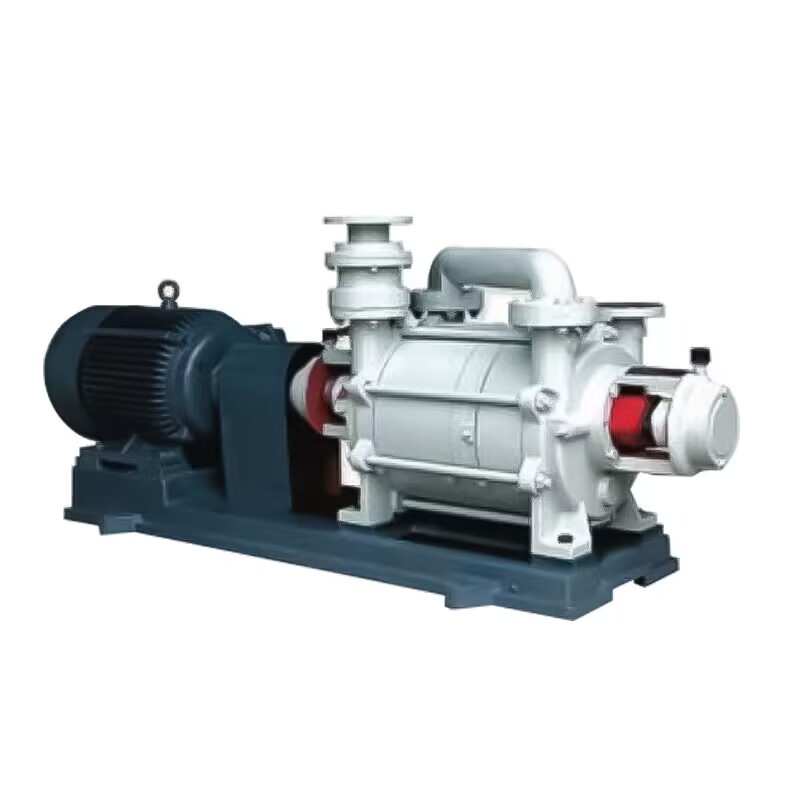After working for a long time on a Liquid ring vacuum pump, there will be some dirt on the outside or inside of the pump. In this case, we have to clean it. External cleaning is relatively easy, but internal cleaning of the pump is difficult. The inside of the pump is usually caused by underworking and can produce a lot of scale and residual impurities, which will affect the operation of the pump if the inside is not thoroughly cleaned or left unclean. So how do we clean a Liquid ring vacuum pump?
1.When cleaning the Liquid ring vacuum pump for the first time, in order to save money, you can first use recycled gasoline, then use washing gasoline, and finally use aviation gasoline to clean it. Then inspect it carefully for damage and scratches.
2.The Liquid ring vacuum pump should clean the foreign matter accumulated in the pump cavity every month. For example, you can open a valve on a drain line or open a drain plug for a short period of time.
3.Dilute nitric acid or other soluble substances, but high-purity substances should not be used, otherwise it will directly damage the internal components of the Liquid ring vacuum pump. Put it in a container, wait about an hour, then rinse straight off with water
4.Carefully remove the nozzle and tube from the vacuum pump and remove it. Use clean cotton wool, tissue or used paper to clean grease from inside the pump and from the nozzle and tubing. Use a caustic soda solution with a concentration of 50-100g/L, heat to 6070°C for soaking, or directly use an organic solvent such as carbon tetrachloride, soak and wash with ethylene trichloride, acetone, etc., and then rinse with cold water several times.
Dry the parts with hot air or in the oven (it is best not to clean the surface of the parts without pure cotton threads to prevent the cotton threads from entering the pump body.) Remember to dry the clean parts (blow or wipe with a silk cloth and then dry) and cover Put them on to keep dust from falling. If there are parts to be repaired and processed, you can properly coat other parts with clean vacuum pump oil to prevent rust.
5.You can gently wipe the rusty or burr parts with oil stone or metallographic sandpaper to remove the rust and burr stains. Pay attention to the smoothness of the parts.
6. Empty the old oil and dirt in the oil drain, and use a funnel to inject new oil from the air inlet (for flushing), turn the pump slowly by hand a few times, and then drain the oil. Repeat the same method once or twice, then you can fill with new oil and use it.
7. If the Liquid ring vacuum pump has too much fouling during operation, it should be rinsed every once in a while (usually 5-10 days), and the flushing time should use a suitable solvent (10 oxalic acid, alcohol can be used) please wait) Rinse, then rinse with water.
8. All filters and filters installed in the pipeline should also be cleaned or replaced regularly (check once a month).
9. For the through holes of the oil passage, oil grooves and gas passages, all particles, impurities, dust, dirt and oil residue accumulated in them should be removed, and the crusted areas should be carefully removed. Finally, use compressed air to dry the oil circuit to avoid accumulation of gasoline or detergent in the oil channel groove. Please pay special attention: Some pumps have very small oil holes in the end cover. For easy locking, please ensure that the two oil holes communicate with the oil valve adjustment screw hole.
10. When cleaning with compressed gas, personal protective equipment (such as goggles, masks, etc.) should be worn, and the exhaust gas should be discharged from the designated pipeline. When using chemical cleaning materials, please pay attention to the warnings and instructions in the relevant safety materials. The chemicals must be compatible with the materials used and it must be considered that the chemicals will corrode the components of the pump.
11. The next cleaning cycle should be determined according to the fouling of the exhaust chamber of the Liquid ring vacuum pump or the blockage of the filter in the pipeline during the initial inspection.

Post time: Nov-24-2022




